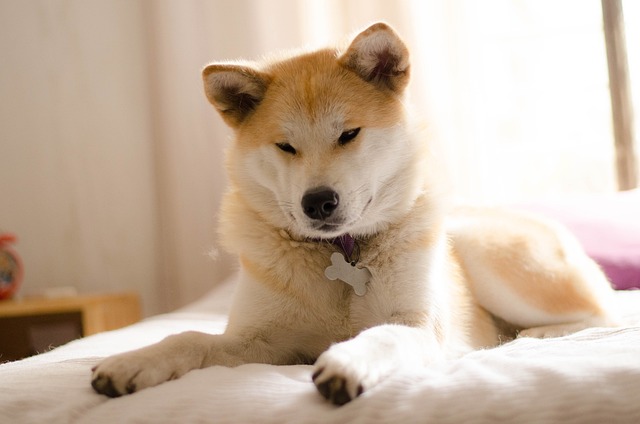
How can I tell if my dog's heatstroke is serious
Let’s be real: It’s a sticky August morning in Los Angeles, and you took your 2-year-old Golden Retriever, Max, for a walk a little later than usual
Akitas are a study in contrasts—calm and dignified indoors, but brimming with strength and stamina that demands release. That thick, fluffy coat hides a muscular build built for endurance, a trait harking back to their origins as hunting and working dogs in Japan. Ignoring that energy can lead to restlessness, chewing, or even destructive behavior. So how much time outdoors do they really need?
Most adult Akitas thrive with two walks daily, each lasting 30 to 45 minutes. It’s not just about burning calories—these outings satisfy their need to explore, sniff, and mark territory, which are crucial for mental well-being.
 Puppies and seniors need adjustments, though. Young Akitas under a year old have growing joints, so limit walks to 15 to 20 minutes, twice a day. Overdoing it can strain developing bones. Seniors, on the other hand, might prefer shorter, more frequent strolls—maybe three 15-minute walks—to keep moving without tiring. Always watch for signs of fatigue: lagging behind, slowing down, or lying down mid-walk means it’s time to head home.
Puppies and seniors need adjustments, though. Young Akitas under a year old have growing joints, so limit walks to 15 to 20 minutes, twice a day. Overdoing it can strain developing bones. Seniors, on the other hand, might prefer shorter, more frequent strolls—maybe three 15-minute walks—to keep moving without tiring. Always watch for signs of fatigue: lagging behind, slowing down, or lying down mid-walk means it’s time to head home.
Leash etiquette matters, especially with Akitas. Their strong prey drive can make them pull toward squirrels or other small animals, so a sturdy harness and well-fitted collar are musts. In many European cities, laws require dogs to be leashed in public spaces, and Akitas—known for their independence—are no exception.
Mental stimulation during walks counts too. Mix up routes to let them explore new scents, or pause to let them investigate a bush or fire hydrant. Carrying a few treats for quick training sessions—like “sit” at crosswalks—turns walks into brain workouts. Akitas are intelligent and respond well to consistent, positive reinforcement, making these moments both fun and productive.
Weather plays a role in walk frequency. Those thick coats make Akitas prone to overheating in summer, so stick to early mornings or evenings, and keep walks shorter. In winter, they handle cold well, but salted sidewalks can irritate paws—booties or a quick wipe with a damp cloth after walks helps. Never skip walks entirely, though; even a brief trip outside maintains their routine and prevents cabin fever.
Finding the right balance keeps Akitas happy and healthy. Too little exercise leads to boredom, too much risks exhaustion or injury. By matching walks to their age, energy levels, and local rules, you’ll nurture that calm, confident demeanor Akitas are known for. After all, a well-walked Akita is a joy to be around—content, respectful, and ready to curl up beside you at the end of the day.

Let’s be real: It’s a sticky August morning in Los Angeles, and you took your 2-year-old Golden Retriever, Max, for a walk a little later than usual

You're enjoying a summer afternoon at the park when you notice your dog has stopped panting and appears disoriented - their gums are bright red

Let’s paint the picture: You’re in your Denver apartment, watching your 4-year-old Boston Terrier, Ruby, plop down mid-play session with her favorite toy

Many dog owners notice their pets nails seem shorter after regular walks,but how much does this daily activity actually help?The answer depends on where you walk—concrete sidewalks or asphalt streets gently file nails as a dog's paws hit the ground

Most dog owners notice their pup scooting across the carpet at some point, but few connect it to impacted anal glands. These small sacs near a dog’s rectum secrete a scent for marking territory

Most vets agree that regular dog teeth cleaning is key to avoiding painful dental issues later. For healthy adult dogs, a professional cleaning at the vet’s office every 12 to 18 months usually works well.